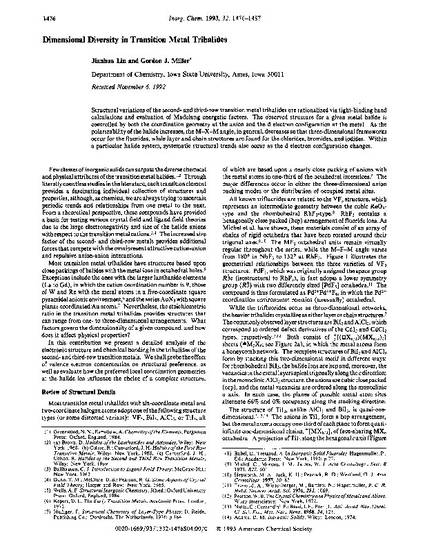
Article
Dimensional diversity in transition metal trihalides
Inorganic Chemistry
Document Type
Article
Disciplines
Publication Version
Published Version
Publication Date
1-1-1993
DOI
10.1021/ic00060a025
Abstract
Structural variations of the second- and third-row transition metal trihalides are rationalized via tight-binding band calculations and evaluation of Madelung energetic factors. The observed structure for a given metal halide is controlled by both the coordination geometry at the anion and the d electron configuration at the metal. As the polarizability of the halide increases, the M-X-M angle, in general, decreases so that three-dimensional frameworks occur for the fluorides, while layer and chain structures are found for the chlorides, bromides, and iodides. Within a particular halide system, systematic structural trends also occur as the d electron configuration changes.
Copyright Owner
American Chemical Society
Copyright Date
1993
Language
en
File Format
application/pdf
Citation Information
Jianhua Lin and Gordon J. Miller. "Dimensional diversity in transition metal trihalides" Inorganic Chemistry Vol. 32 Iss. 8 (1993) p. 1476 - 1487 Available at: http://works.bepress.com/gordon-miller/33/

Reprinted (adapted) with permission from Inorg. Chem., 1993, 32 (8), pp 1476–1487. Copyright 1993 American Chemical Society.